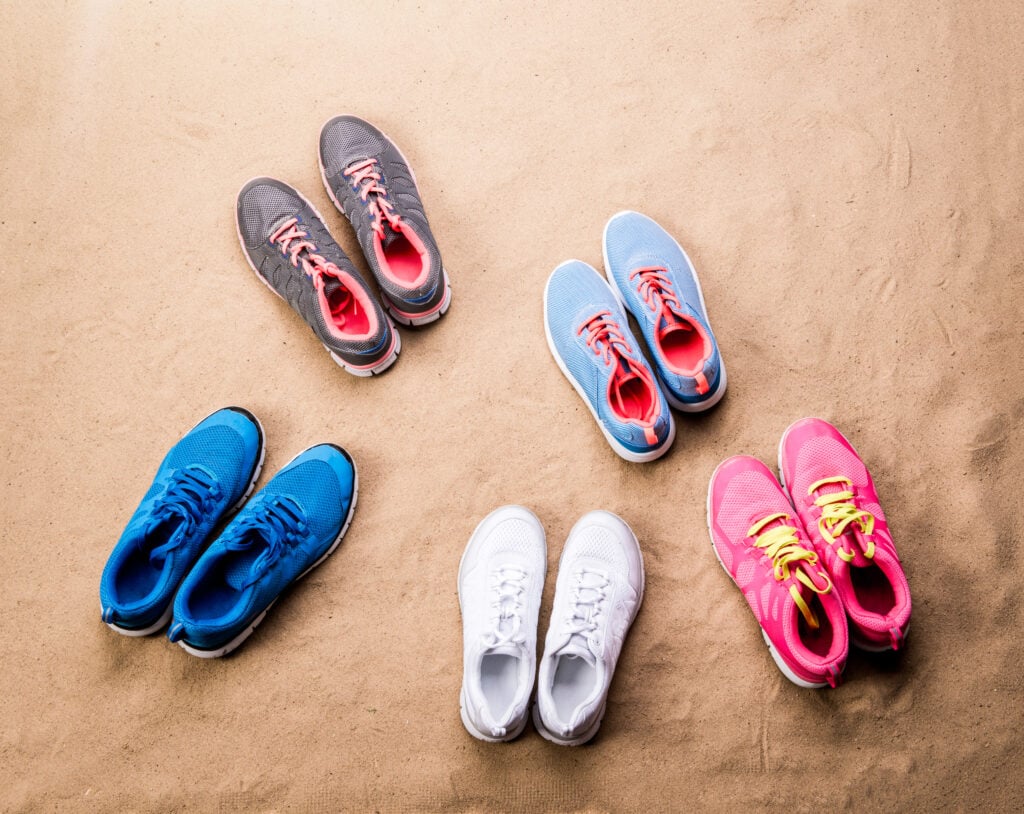
The end of the year is right around the corner, and the promise of a fresh start is exciting and motivating. Now’s the perfect time to celebrate your past accomplishments, to start dreaming about what’s next and to list your running goals for the upcoming year.
Source: xalien/Shutterstock.com
Whether you’re a beginning runner or a seasoned one, it’s important to set reasonable goals. And it’s even more vital to wear the right gear, so you can level up your running performance. Read on for some great tips to start off on the right foot and make the new year a great one!
1. Selecting the Perfect Running Shoes for Your Needs
Get your new year off to a strong start by making a resolution to buy running shoes from a reputable brand like Asics.
Your best running shoe depends on your foot type, running style, and terrain type. Asics sneakers come in a wide range of options, so there’s something for all types of runners, from casual to elite.
Here’s a look at what Asics[1] delivers:
- Extra cushioning for better shock absorption and reduction of joint impact
- More comfort during long runs and higher impact activities
- Structured support systems for runners who need extra support or help preventing overpronation
- Breathable materials for cool, dry feet
- Durable outsoles for great traction when running on asphalt or pavement
- Rugged outsoles perfect for uneven terrain when running on trails
- Specially designed lightweight shoes for optimal traction and a snug fit, perfect for track running
Source: Hibbett.com
When you’re out shopping for your shoes, ensure they fit properly and feel comfortable. Try them on with socks you typically wear during your runs and walk around the shop a few times to test them.
2. Embracing Innovation With Modern Footwear
If you’re looking for comfort and durability, the Nike Vomero 5 might be the right running shoe for you. This shoe’s best features are:
- Nike’s Cushlon brand foam to provide soft comfort and impact absorption
- Breathable mesh and ventilation ports for cool, dry feet
- Plastic caging on the sides for support and stability
- Durable rubber soles for great traction on a variety of terrains
- Reflection details for visibility in the dark
- A stylish look that combines vintage and modern features
The innovative shoe technology found in the Nike Vomero 5 will help you improve your running performance. With better cushioning, support, traction, and energy return, you’ll be meeting your running goals for the new year in style and comfort.
3. Tailoring Footwear Choices for Women
If you’re determined to set running goals and stick to them, finding the right footwear is probably the most important step in reaching those goals. Wearing proper shoes helps prevent blisters, bunions, calluses, plantar fasciitis, tendonitis, and other painful conditions.
Here are some tips for selecting the right women’s running shoes:
- If you have flat feet, get a pair with good arch support and stability.
- If you have high arches, you need more cushioning.
- If you’re running on asphalt or pavement, extra cushioning and support will protect your joints better.
- If you’re running on trails, look for shoes with extra grip, stability, and a tighter fit.
Don’t forget to replace your shoes after running 300 to 500 miles in them. With the amazing selection of women’s running shoes available today, you won’t have trouble finding a great pair, or two!
Having optimum comfort and support in your running shoe not only protects your feet but also boosts your confidence, performance, and ability to meet your goals for the new season.
4. Finding the Right Fit for Men
Don’t set yourself up for injury or discomfort with running shoes that aren’t suited to your foot and running style. Consider the following factors when choosing men’s running shoes:
Arch Type
Low arches or flat feet tend to roll inward (overpronate). You’ll do better with shoes that control your motion, so look for a pair with stable sides and stronger support. High arches benefit from shoes with extra cushioning and flexibility. This helps absorb shock better and supports the natural movement of the foot. Extra cushioning is also beneficial for runners who are heavy or cover more miles.
Running Style
If you are a heel striker, you’ll benefit from running shoes with more cushioning in the heels. Toe or forefoot strikers benefit from running shoes with more responsive cushioning (memory foam) in the midsole. Try the shoes on with socks that you’ll be wearing while running. Walk around the shop to see if they’re comfortable and offer support where you need it.
5. Setting Achievable Running Goals
Set running goals that are realistic but motivating, and don’t try to overachieve. Match your fitness level and available running time to your goals to avoid burnout or injury.
No matter what running aspirations you have, you should be proud of every achievement. Get into the habit of tracking your progress regularly, so you can celebrate yourself and your milestones!
6. Incorporating Cross-Training and Recovery
This year, when you set your running goals, consider adding a cross-training routine. Not only will cross-training enhance your overall fitness and performance, but it can help you prevent injuries, improve flexibility, strengthen muscles and enhance your recovery.
Rest and recovery periods are an essential part of every running program. They help your muscles and tissues repair and grow, restore your energy levels, reduce the risk of injury, balance hormone levels and prevent mental fatigue.
Making Your Running Goals a Reality
Get off on the right foot this year by setting reasonable (but challenging) running goals. Sit down with pen and paper and clearly define your objectives, set short-term milestones, incorporate cross-training exercises and purposely schedule rest days.
And don’t forget to invest in proper running gear that matches your needs. Having the right running shoes is vital to your success.


